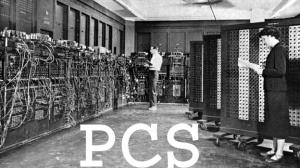
Setting up and using a printer in QNX
Introduction
QNX is the operating system of choice for a small number of Physics
labs and classes. Much of the "official" documentation regarding
QNX is
sparse, thus it is the intention of PCS to document basic configuration
and support solutions within the system as they are discovered.
Creating and using a printer
The steps for creating a printer are as follows:
- Edit the /etc/printcap file in any text editor so that it
contains the following lines:
(The printers currently in 3233 are "largefries" and "ignite.")
largefries|largefries|default line printer:rm=ftp.broida:rp=largefries:
ignite|ignite|rm=ftp.broida:rp=ignite:
This assumes that your printers are connected to the
ftp.broida server. If this is not the
case, you will have to change the printer/server name
appropriately. Note that one printer must be designated as the
"default line printer"
- Create the following printer spool directories:
mkdir /usr/spool
mkdir /usr/spool/output
mkdir /usr/spool/output/lpd
- Execute the command "chmod
-R 1777 /usr/spool" to give everyone proper permissions on the
spool directories
- Start the printer daemon by executing the command "lpd -l". NOTE: You will
have to run this command every time
you reboot the system! If lpd will not start up, look in the
/usr/spool/output/lpd directory for a lpd.lock file and remove it:
rm
/usr/spool/output/lpd/lpd.lock
- Enable the printers: type "lprc
enable all" and "lprc
start all" at the command-line.
- To verify the printer is working, type "lprc status" at the
command-line; you should get something like the following back:
lp:
queuing is enabled
printing is enabled
no entries
- Test print by typing "lpr
-Pignite <some-file-name>", where <some-file-name>
is a
text file
Starting lpd at boottime:
- vi /etc/rc.d/rc.local and
add the following:
rm -rf
/usr/spool/output/lpd/lpd.lock
lpd -l
- chmod 755
/etc/rc.d/rc.local
- Reboot
FAQ
Q) I did all of the above, but nothing
came out of the printer. What's up?
A) You can use lprc to check the status of a print job. If it
returns "sending to ftp.broida", just wait; it's probably on its way.
If instead you see anything that says "disabled", try enabling
the printer and queue by typing "lprc enable". If that doesn't
work, call pcs @ x8366
Q) I'd like to try troubleshooting this myself; how can I get more
information about what the printer daemon is doing?
A) QNX has basic system logging functionality. To enable it,
execute the commands "touch /var/log/syslog" and "touch
/var/log/maillog". Then, execute the "syslogd" command.
Finally, kill and restart the lpd process. Now when you
print, you can check the /var/log/ files you just touched to get more
information on what's happening
Q) I was printing fine until I had to reboot. Now it won't print.
What's up?
A) You have to restart the lpd process manually each time the system
boots. Run "lpd -l" to do so.
Q) I'm not using largefries; I have my own printer I'd like to setup.
How can I do this?
A) Please consult the documentation online at
http://www.qnx.com
While it is occasionally sparse it is the only good source of
documentation for QNX that we are aware of. Local printers don't
seem to be too much of an issue, but all network printers must be able
to handle lpd style printing. We are not aware of any way for QNX
systems to print to JetDirect printers directly, so they and any/all
other types besides lpd that you wish to be able to print to over the
network must be installed on the ftp.broida server. Contact
pcs@physics.ucsb.edu or call us at x8366 for help doing this.
Q) I followed your instructions for setting up the syslog, and in the
logs it says something about file system corruption. I also get
this sometimes when I try to start the lpd process. What does
this
mean?
A) It means someone probably powered down the system with the power
button instead of shutting it off properly from within QNX. You
can use the chkfsys utility to repair the filesystem. Please see
http://www.qnx.com/developer/docs/qnx_4.25_docs/qnx4/utils/c/chkfsys.html
for more information regarding chkfsys, or contact pcs at
pcs@physics.ucsb.edu or x8366.

